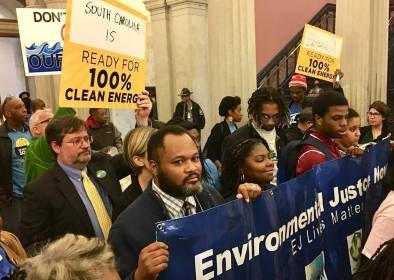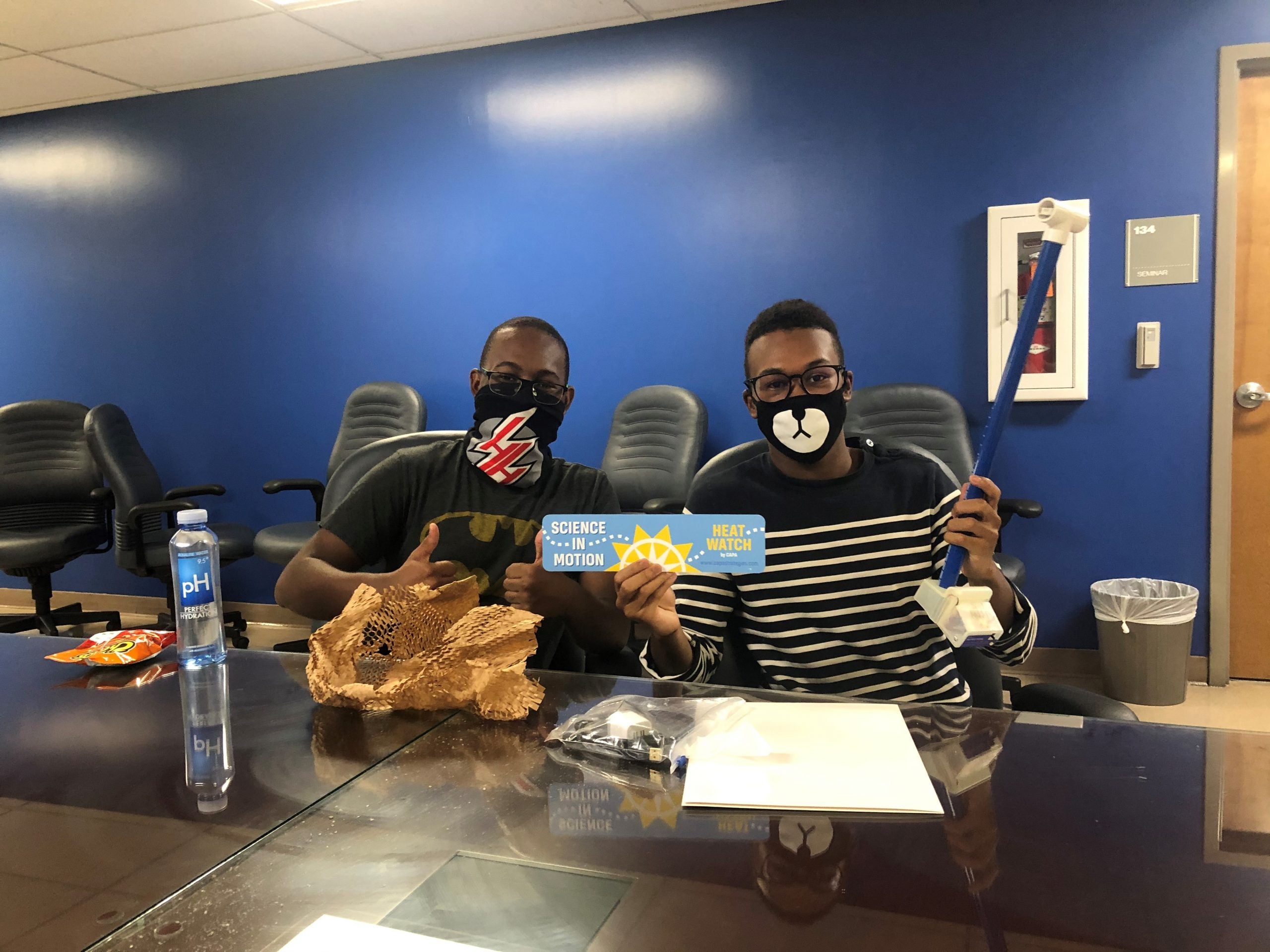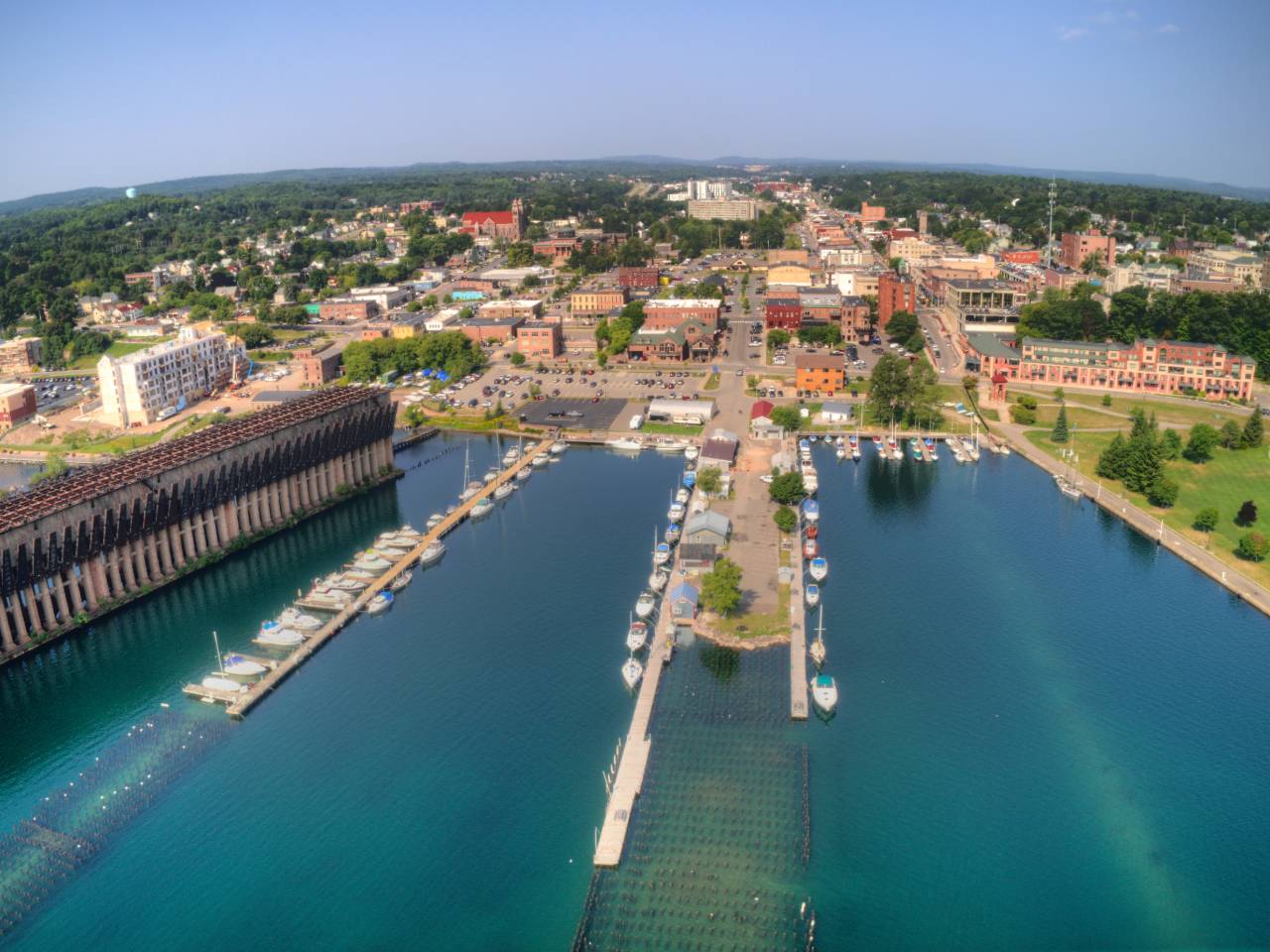Community organizing, healthy families
A long history of decisions by governments and corporations to place environmental hazards in communities of color, along with housing segregation and other forms of discrimination, has forced the residents of North Charleston to deal with chronic exposure to air pollution and other toxic substances related to shipping and manufacturing activity in the area. All the while, community members are faced with the possibility of other environmental challenges, such as natural disasters, which will be exacerbated by climate change. But residents are not standing idly by. They have developed a strong foundation for responding to both climate change and other issues they face through community organizing, community science and advocacy around air quality.
In a world bustling with human activity, no place stays the same for long, including the city of North Charleston, South Carolina, situated slightly upriver from the coast.
Rice and indigo plantations were dismantled after the Civil War, and a midsized town took their place. North Charleston is now a busy port city dominated by manufacturing and business sites. The 1970s brought more ships and imported goods to North Charleston than ever before and, with those, the prospect of greater economic development. But imports and the goods produced at factories are quickly loaded onto diesel trucks and trains and shipped far away — taking the economic prosperity elsewhere and leaving residents to bear the brunt of the pollution from industrial activities and transportation.
The southern part of North Charleston, which is predominantly made up of Black communities, has been heavily affected by this pollution. The disproportionate impacts of pollution are perhaps best illustrated by rates of asthma, a potentially life-threatening respiratory illness associated with poor air quality. In Charleston County, between 1970 and 1997, the rate of Black children discharged from hospitals with asthma increased twentyfold, compared to a fivefold increase in white children, which began later, in the 1980s.
Herbert Fraser-Rahim was very involved with his local mosque in the Union Heights neighborhood of North Charleston and had become concerned for the health and safety of his fellow residents. The combination of unaffordable housing and limited economic opportunities was driving an increase in local crime, and residents were also experiencing negative health impacts from pollution. Fraser-Rahim’s granddaughter has asthma, and his mother died from it. “We knew that environmental justice was our major chance to make improvements in the community,” explains Fraser-Rahim.
In 2005, Fraser-Rahim attended a meeting at a local political activist’s office, where he met other concerned residents: Thomasina Green, Raheem Kareem and Michael Brown. The four decided to form a new group called the Lowcountry Alliance for Model Communities (LAMC). The group’s core mission is to build healthy families by addressing four cornerstone issues — economic development, affordable housing, education and environmental justice — for seven underserved communities in the North Charleston area. Since then, the nonprofit group has grown tremendously and has become one of the most successful environmental justice groups in the southeastern United States.
The group’s core mission is to build healthy families by addressing four cornerstone issues — economic development, affordable housing, education and environmental justice.
LAMC, alongside the broader North Charleston community and other local leaders, achieved its first major success in 2005. In a landmark legal case, LAMC used the National Environmental Policy Act (NEPA) to secure funding through a mitigation agreement to compensate for the negative effects of activity from the port. Although NEPA was created in 1975, LAMC and the broader North Charleston community was the first group in the U.S. to succeed in using the policy to gain a mitigation agreement. The money from the agreement was used to launch numerous projects aimed at bolstering LAMC’s four areas of focus.
With funding from the mitigation agreement, Fraser-Rahim and the other founding members of LAMC partnered with Dr. Sacoby Wilson, an environmental justice scientist who was working at the University of South Carolina at the time and continues to work on dozens of environmental justice projects in his current role as an associate professor at the University of Maryland. The team began organizing workshops to educate community members on a variety of relevant topics, including the impact of poor air quality on health, ways to redevelop “brownfields” (abandoned industrial sites with traces of toxic substances) into parks for other uses, and training on how to become environmental justice advocates.
These workshops not only educated residents on hazards and safety concerns in their community, but also served as an important steppingstone toward greater action. Beginning in 2010, some workshop attendees were recruited by LAMC to become active community scientists. The group received a grant from the National Institutes of Health to hire residents to identify and monitor key sites around the North Charleston area, where air quality is of particular concern.
As part of this project, LAMC partnered with the South Carolina Department of Health and Environmental Control (DHEC), which provided air quality monitoring devices and technical training for residents on how to use the equipment. The devices trap, analyze and quantify particulate matter, which includes substances that can be harmful to the lungs, such as pollen, pollutants from fossil fuel combustion and other toxic substances. Some community scientists were also trained in safely collecting soil samples from brownfields.
Wilson emphasizes that, while DHEC offered technical assistance, the air quality monitoring project was almost entirely led by residents. “They were involved in the study design, the data collection, dissemination of data and translating data to action,” he says. “This is very much a community-driven research process.”
All research projects being done in North Charleston must be approved by the Charleston Community Research to Action Board, an independent group that ensures all research is done ethically and in line with the interests of the community. The data that residents collect is sent to scientists at the University of South Carolina, who use it to create pollution maps. The maps are then used by residents to inform decision-making in their community. In one instance, LAMC used the data collected by residents to stop a warehouse from being built at a site that would have negatively impacted locals, increasing their exposure to pollutants from truck traffic. The group also succeeded in shutting down a nearby incinerator that had been a significant source of pollution and greenhouse gases.
Not everyone will agree on the best solution to a problem, Fraser-Rahim notes, and some residents saw the shutdown of the incinerator as a hindrance to local business. But Fraser-Rahim emphasizes that LAMC is aiming not just for any economic development, but for the right kind of economic development. “We want clean business opportunities that will not be detrimental to the communities,” he says, noting that collaboration is essential for finding the middle ground on any community-based solutions.
The air quality monitoring project has largely been viewed as a success and continues to this day. Next, LAMC is looking to create an app that provides residents with live updates on local air quality, informing them of the safest times and places to exercise and enjoy the outdoors. LAMC is also collaborating with Harambee House, a community-based group in Savannah, Georgia, which heard about the air quality monitoring project and is looking to implement a similar approach for its residents (Harambee House is featured in the video from another How We Respond story about responses to sea level rise in Savannah).


As LAMC continues to address long-standing environmental and health concerns, the group has turned its attention to new challenges. At the helm is current Executive Director Omar Muhammad, who is helping to implement a new emergency response program for community members. This newest project was sparked by the COVID-19 pandemic but grew to encompass the full range of possible manmade and natural disasters that could affect residents.
At the beginning of 2020, residents began to hear news about a novel coronavirus that was sweeping the globe. But the information residents were hearing was often far from the truth. “What we found is that there was a lot of misinformation shared in our community,” says Muhammad, noting that many residents do not have access to the internet and therefore tend to receive news by word of mouth. “For example, we heard residents in our community say that Black folks can’t get COVID. And we know there’s evidence out there that low-wealth African American communities are disproportionately impacted by COVID.”
After seeing the spread of misinformation at the start of the COVID-19 pandemic, Muhammad and other LAMC members wanted residents to have better access to information and resources during emergencies. His team looked to other examples of community-based solutions being developed in the Southeast and heard of a project being done in Durham, North Carolina, that could be adapted for the residents of North Charleston.
The approach involves identifying captains from each neighborhood who are responsible for disseminating accurate information to residents during a disaster and directing them to the appropriate resources. LAMC applied for funding from the U.S. Environmental Protection Agency (EPA) and partnered with the University of South Carolina, Clemson University, the College of Charleston, and DHEC to develop 13 training programs, each of which addresses a specific type of disaster. Topics range from natural disasters such as hurricanes and tornados to manmade disasters such as toxic release events from nearby industrial sites.
“Not only from COVID, but what we have learned from previous disasters is that the government is slow to respond, particularly for low-wealth Black and brown communities,” Muhammad explains. “Having communities trained on how to prepare, plan and recover from a disaster will lessen the impact that people will feel after the disaster takes place.”
Each neighborhood is responsible for identifying its local captain, and then captains receive in-person emergency response training. The training programs were developed by Dr. Daniel Kilpatrick, a research associate at the University of South Carolina. While Kilpatrick originally designed the programs for communities in the Philippines, he has been working closely with North Charleston residents to adapt the programs. Community members participated in multiple town halls to discuss which components of the emergency preparedness programs apply to North Charleston and how the trainings can be modified to be more applicable locally.
Training programs such as these will only become more important as climate change worsens. According to the Fourth National Climate Assessment, the southeastern U.S. faces several serious climate change threats, including increased exposure to heat and vector-borne diseases, more frequent extreme rain events, and coastal flooding. Flood events in Charleston, South Carolina, have been increasing in recent years and the city is projected to face a total of 180 tidal floods by 2045.
Many communities in the region recognize the severity of these issues and are eager to take action. Word of LAMC’s emergency preparedness programs has spread quickly, and with it a wave of enthusiasm. Before the programs were officially launched, Muhammad was receiving multiple calls daily from people who are interested in participating — not just from communities in North Charleston, but from across South Carolina.
“We always planned for this program to be broadly available, but we did not initially think that people would be reaching out across the whole state to be a part of the first cohort of trainees in this program,” says Muhammad, noting that he has been contacted by other environmental justice groups as far away as Georgia and Alabama that have also expressed interest in the training programs.
While the capacity of the in-person program is limited because of COVID-19, LAMC is now looking to broadcast and record the training programs through Zoom to make them more widely available.
Wilson has continued to work with LAMC since the early days of the air quality monitoring program and is now working with the group as a consultant and co-investigator of another disaster-related project. The team applied for funding through the EPA to do risk modelling of different flood scenarios that could affect North Carolina and South Carolina, as well as to develop focus groups, surveys, block assessments and GIS mapping with community members. “The outcome will be new disaster resilience toolkits for folks who live in frontline and fence-line communities impacted by environmental justice and climate change, and who may be more vulnerable because of economic or social vulnerabilities,” Wilson explains.
He says it is especially important to invest in climate change projects for communities of color. “We know climate change is going to impact all of us, but it’s going to impact some of us differentially,” he says. “I think it’s important for communities of color to build resiliency because they are the most impacted by climate change.”
Wilson points to a multitude of examples of how communities of color tend to be hit first and hardest by climate change issues, whether it be the pollutants from the combustion of fossil fuels or the impacts of climate change itself. He points to natural disasters such as Hurricane Katrina and the extreme winter storm in Texas in 2021 that disproportionately affected communities of color.
Notably, the Southeast region of the U.S. is expected to experience the worst economic impacts from climate change across the country, and places like North Charleston that are already experiencing economic disparities are expected to feel these impacts severely.
LAMC has been implementing a number of other projects aimed at addressing economic development and affordable housing in its communities, but Fraser-Rahim acknowledges that, while the group has accomplished some meaningful progress, there’s still a lot of work left to do — and it’s far from easy.
“It’s hard work, but it’s worthwhile if you’re able to work with folks in the community and see progress being made,” Fraser-Rahim says. “That’s the best, and I wouldn’t substitute it with anything.”
Story by: Michelle Hampson (July 2021)
Banner Image: Omar Muhammad leading an Environmental Justice tour of Liberty Hill. | Credit: Moving Forward Network.



